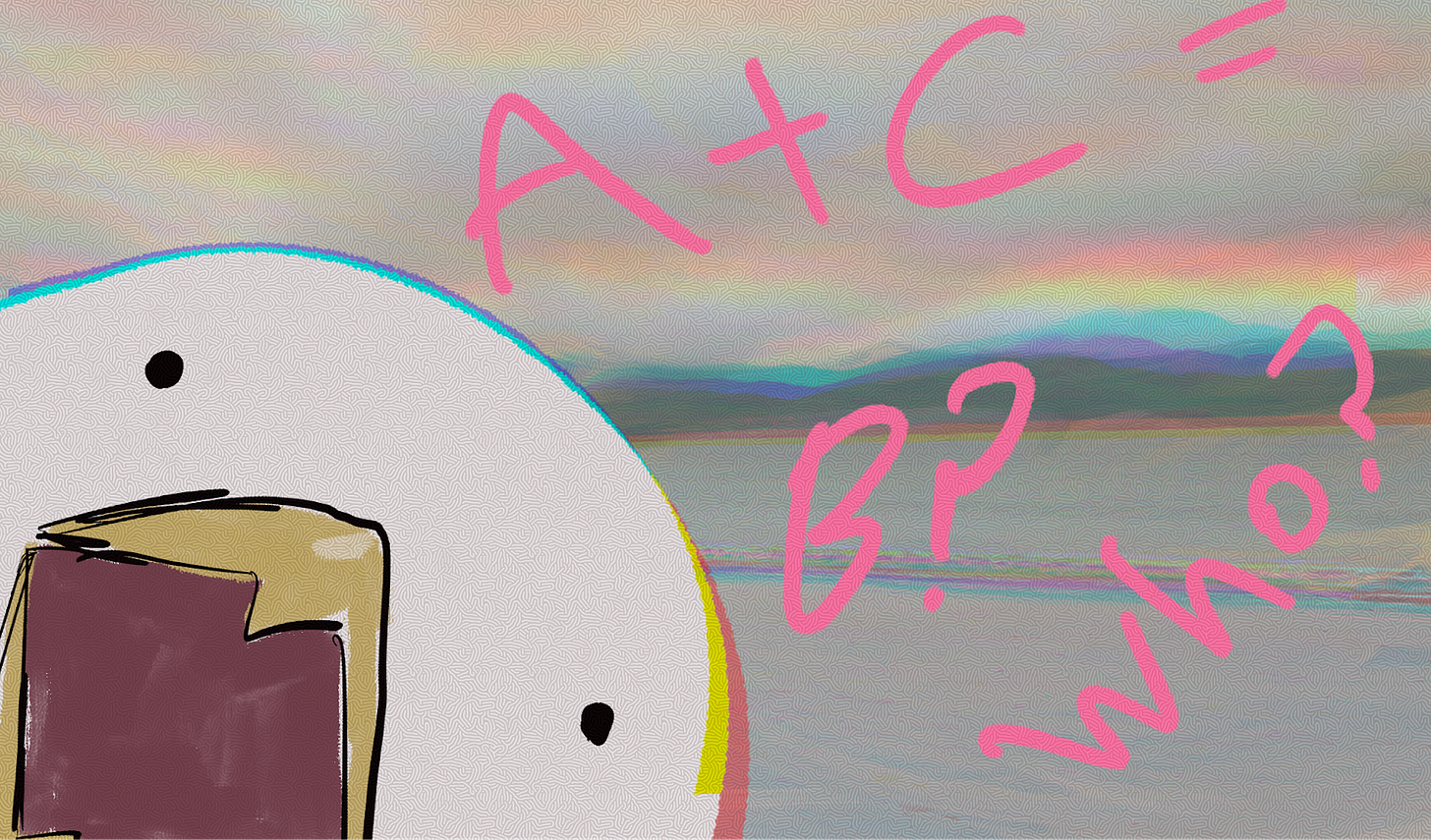Your thoughts are all tangled.
A little vignette on ordering your ideas in writing (and probably in life).
On Holidays, I’m allowed to write little vignettes instead of full letters. It’s true, god told me. Not going to say which one, but it came up, and he also told me that he hates you specifically.
But anyway, most of our letters recently have been nice big, pithy dives into concepts of creativity and living a full life. While this is good of me, great even, this letter also aims to improve the finer points of your writing. So here’s a quick minute skill to remember as you workshop your passages.
Pay attention to the order of affirmative and negative thoughts.
If your paragraphs keep flip-flopping between ideas, identify which sentences support a point and which are counterarguments. Play around with how you order them, and note the effect it creates. Let’s say we have three elements we need to convey in a passage: Idea A, Idea B, and Idea C. (A) and (C) are affirmative thoughts, and (B) is a negative thought.
Level 1: Group affirmative thoughts together for efficiency.
Say it’s Tuesday night, you’re sad and horny. Unrelated, you decide to reply to an online listing of someone selling their old furniture. You reply:
1.
“I will buy the couch, but not the table. I will also buy the lamp.”
You are saying an affirmative thing (I will buy), a negative thing (I will not buy), and then another affirmative thing (I will also buy).
I will buy the couch (A), but not the table (B). I will also buy the lamp (C).
I can do (A), but I can’t do (B). I also can do (C).
This version of the message is fine and you have communicated all three things you wanted to. But there’s a more efficient option in grouping the two affirmative thoughts.
Instead of (A) but (B) but also (C), you get:
2.
(A) + (C), but (B).
“I will buy the couch (A) and lamp (C), but not the table (B).”
Bing bang, boom — we’ve saved the seller the burden of reading four extra words. We’re heroes. While this kind of thing can seem either obvious or inconsequential, all these extra words can add up in longer messages — especially when we are not actively thinking of them. And when it comes to crafting more complicated ideas, there is room for a lot of confusion if we’re not looking for the common through lines in our disparate ideas. More so than brevity for its own sake, the goal in writing is almost always striving for clarity. The less gunk we have around our intended messages, the better.
Level 2: Control the flow of affirmative and negative to soften a blow.
Say it’s Wednesday; you’re feeling good. You have a lovely new couch and an okay new lamp. You’re horny. Unrelated, you receive an email about the play you just auditioned for. They write to you:
1.
“We really enjoyed your audition (A), but unfortunately, we won’t be able to offer you the role (B). We would, however, love for you to audition for our upcoming production (C).”
(A), but (B), but also (C).
Imagine if they had written:
2.
“We really enjoyed your audition (A), and we would love for you to audition for our upcoming production (C), but we won’t be able to offer you the role (B).”
(A) + (C), but also (B).
While these both read like generic form responses — see how that second one feels slightly worse? It ends on a negative note, leaving you an easier ramp onto the interstate of spiraling self-doubt. Alternating affirmative and negative in this scenario follows the same logic as a compliment sandwich, where you praise someone, criticize them, and then finish the dressing down on another note of praise. It generally feels better for the recipient to end on a thought intended to uplift.
Pause for now.
There are many ways to expand on this idea and other impacts to consider when playing around with this kind of sequencing. But a vignette was promised, and a vignette has been delivered. There will be more holidays where we can dive into this topic again. What’s important for now is to always remember to be intentional with every word we’re placing on the page. It is in the small decisions where our writing finds its ability to accurately represent us. It’s Thursday now. We’re decidedly not horny. Unrelated, have a great rest of your holiday.
More words to read!








